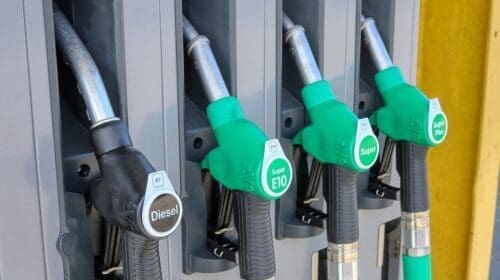While questions swarmed about the source of the recent Nord Stream Pipeline blasts, earthquakes and landslides topped the list of potential causes. Contradicting the rumors, Bjorn Lund, Swedish National Seismic Network Director, and his team gathered data indicating explosions originated in the water and not under the seabed in rock.
According to Lund, the first explosion occurred during the early hours of Monday southeast of Bornholm, a Danish Island. The second occurred northeast of the first and packed a more significant punch mimicking the power of a 2.3 magnitude earthquake. The activity resulted in leaks from the Nord Stream 1 and 2 pipelines that run underwater from Russia to Germany. With the explosions being of significant strength, Denmark, Finland, and Norway registered seismic activity.
“There’s no doubt this is not an earthquake,” said Lund.
Targeted Assets
The Russian invasion of Ukraine has disrupted the geopolitical arena and is suspected of having influence in the Nord Stream explosions. Several European officials have suggested possible sabotage due to the energy standoff with Russia.
Danish Prime Minister Mette Fredericksen believes the explosions to be deliberate and by unknown forces. Polish Prime Minister Mateusz Morawiecki agreed, identifying the incident as “an act of sabotage” and reasoning that it would cause an escalation in the current situation in Ukraine. While some figureheads confidently publicize their beliefs of cause, the U.S. Secretary of State, Antony Blinken, informed the press that sabotage nor an attack had not been presently confirmed. The CIA, however, had warned Germany in the weeks prior about a potential attack.
Current Exposure
Although the Nord Stream pipelines 1 and 2 were intended to carry Norwegian gas to Poland, they are not routing natural gas to Europe. The Denmark military captured images of a white foamy area on the water’s surface.
“We cannot say how long the leak will go,” said Dan Jorgensen, Danish Energy Minister, as the gas had not been shut off at the time of his statement.
In the meantime, however, authorities are prohibiting ships from entering the affected area as they attempt to combat the potential ignition of gas hovering over the water’s surface and in the air. In addition to the environmental concerns, officials feel this is the primary reason for concern.
Plagued with Controversy
Announced in 1997, Nord Stream 1 became operational in 2011. Responsible for approximately 35 percent of Europe’s combined gas imports during the previous year, the pipeline is the primary transport mode for carrying Russia’s gas concentration to Europe. Its operation proves crucial for multiple reasons, including Germany’s home and industry power needs.
Nord Stream 2 came to fruition a little over a year ago with an annual delivery goal of 55 billion cubic meters of gas, which accounts for over half of Germany’s yearly consumption. That equates to a $15 billion value to Gazprom, the Russian state-owned company that manages the pipeline.
Its development came with intense scrutiny and controversy. Fearing it would elevate Moscow’s European influence, the pipelines were met with opposition by the United States, Ukraine, and other countries in the EU. Germany additionally pulled out of the pipeline project before it became operational due to the resistance of Russia invading Ukraine.
While Nord Stream 1 and 2 have allowed Russia to gain momentum in Europe, many countries hesitated in seeking alternative energy sources, fearing rising energy prices. As Moscow annexed an area of Ukraine in 2014, the European Union vowed to reduce its dependence on Russian gas. Still, imports rose between 2016 and 2018 but fell slightly afterward.
The hard press forward instituted by Russia in invading the remaining real estate of Ukraine flipped the proverbial switch in Russian gas consumption. Still, Europe’s response was not at all timely. As a result, soaring energy prices are forecasted to drive a rise in inflation throughout the continent.
A Look Ahead
Whether the pipelines are shut down indefinitely or for repair and potential repurpose, the Nord Stream explosions have enlightened the public on a potentially grim future. The Russian energy debacle will continue to linger.
While attempting to prevent a rise in inflation across the globe, The primary economies of the West agreed to rally and strike Russia with a price cap on its oil to falter the country’s ability to finance its war on Ukraine. With a quick strike back, Russia threatened to respond with a ban on all oil exports heading to countries participating in the price cap implementation.
Europe fears a cold winter that could provoke a crisis where energy prices have already skyrocketed. Goldman Sachs weighed in with a potential distressing reality that a typical European family could soon be looking at monthly energy bills of 500 euros, which equates to $480 USD. A harsh winter could provoke the equally harsh reality of a 200 percent energy cost increase compared to the previous year.
While speculation continues and the Nord Stream explosion theory is further investigated, tensions will rise. Confirmation of sabotage could lead to a significant geopolitical showdown, with rising prices and supply shortages only being the start of the problems at hand.
Nick Vaccaro is a freelance writer and photographer. In addition to providing technical writing services, he is an HSE consultant in the oil and gas industry with twelve years of experience. Vaccaro also contributes to SHALE Oil and Gas Business Magazine, American Oil and Gas Investor, Oil and Gas Investor, Energies Magazine and Louisiana Sportsman Magazine. He has a BA in photojournalism from Loyola University and resides in the New Orleans area. Vaccaro can be reached at 985-966-0957 or nav@vaccarogroupllc.com.
Oil and gas operations are commonly found in remote locations far from company headquarters. Now, it's possible to monitor pump operations, collate and analyze seismic data, and track employees around the world from almost anywhere. Whether employees are in the office or in the field, the internet and related applications enable a greater multidirectional flow of information – and control – than ever before.











